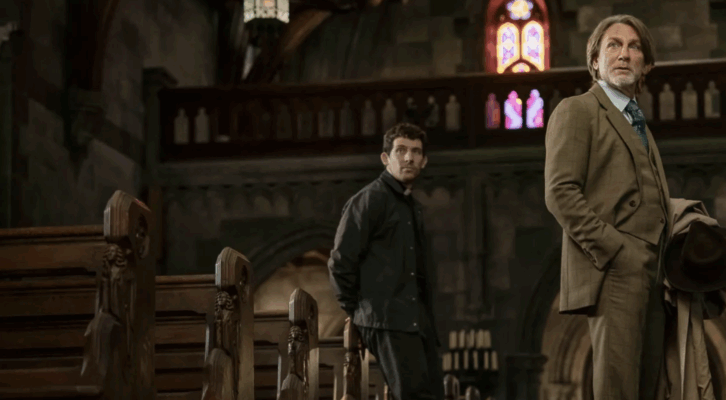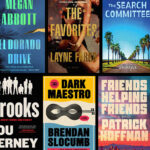Matchstick Men, Ridley Scott’s 2003 caper, is a film about a lot of things: small cons, big cons, guilt, anxiety, mental illness, family, redemption, and healing. But not in the ways you might expect. Matchstick Men will trick you. It leads you to think that “con” stands for “confidence.” But actually, it’s “conscience.”
It’s the story of Roy (Nicolas Cage), con artist with a chainsmoking habit, an extremely intense obsessive compulsive disorder, and high anxiety. When he runs out of his (illegally obtained) meds (and occasionally when he doesn’t), these conditions get in the way of his ability to work. As those of us who love heists and capers and other grifty microgenres already know, con artists, if anything, must always be on top of their game. It’s no wonder, then, that his partner/protégé Frank (Sam Rockwell) grows concerned when Roy goes on a mental health bender. He helps him find a new shrink, Dr. Klein (Bruce Altman), who wants to help Roy get into a better groove.
As I’ve said earlier, Matchstick Men is a movie about healing… or, at least, the healing doesn’t take place in Dr. Klein’s office. It occurs when Roy realizes that he has a fourteen-year-old daughter, Angela (Alison Lohman). Angela is a goofy, giggly, messy, emotional teenager with a skateboard and a love for Ben and Jerry’s ice cream. And despite Roy’s very inflexible lifestyle, he takes to parenting right away; he doesn’t understand exactly what he’s doing (but movies have taught me that this might be an essential part of parenting, anyway).
Anyway (and there are spoilers ahead, so if you haven’t seen this film and don’t want it to be ruined for you, perhaps pause your reading here), Roy’s life takes a turn for the better. It’s not clear if it’s the new pills Dr. Klein prescribes or Angela’s presence in his life, but he’s markedly happier, healthier, and less encumbered by his ailment. This isn’t to say that Angela’s easy to handle, but that Roy begins discovering the euphoria of having someone to love and care for, for the first time in a long time. In a life hemmed in by flim-flam and self-loathing in equal measure, Roy begins to foster something genuine in which he truly can take pride.
While Roy is joyfully acclimating to his new life as a father (read: a man who can never access his bathroom anymore), he decides that he and Frank should pull off a big store, conning a rich jerk named Chuck (Bruce McGill) whom Frank has spotted at the yacht club. Things are starting to go really well for Roy the first time, especially when he realizes that Angela has a knack for cons, herself. Though he doesn’t want her to go down the path he has taken (which he knows is morally reprehensible), he is both impressed by her natural skills and excited that he can bring his daughter to work, every day. And, of course, that she finds something about him to be pretty cool.
Thus, Matchstick Men, smartly written by Ted Griffin, kindles several narrative arcs at the same time. It’s the story of three relationships: Roy and his daughter, Roy and his partner, and Roy and himself. Literally due to the second plot of the three, though, it is a crime movie, and a heist movie, at that. The thing is (reminder, I said there’d be spoilers), Matchstick Men moves from being about cons conceptually to veritably pulling off one: what unfolds is an incredibly breakneck, convoluted series of plot twists that changes the focus of the film entirely. Suddenly, we find out that we’re not following Roy as he cons other people, but we’re following a con man as he, in turn, becomes a nark in a scheme far bigger than any he has perpetrated. See, we find out towards the end that Frank, Angela, and Roy’s shrink are all working together, have been from the beginning, and that every aspect of Roy’s life we’ve witnessed thus far has been a sham, a whole theater of lies and deception so overwhelming that it turns into a full conspiracy. That is, every aspect except his self-development: his overcoming the stranglehold of his OCD, his desire to want to be a responsible parent, his realizations that he should pursue a more honorable livelihood.
The title of the film, Matchstick Men, refers to one of the many synonyms for “conman.” But its connotations with fire serve the story rather well: Roy begins to realize that if he truly wants a meaningful life, then he has to start over: his life of hoodwinks and fleeces and swindles must be (metaphorically) burned to the ground, and he must be reborn from its ashes. It’s painful for Roy (and Cage does not miss a single change to scream out this pain), but the pain is a necessary part of his transformation. His name, after all, means “king.” It’s time he embraces its symbolism.
Who is the real mark in Matchstick Men? I wondered this, towards the end. It’s not Roy, though he looks to be, as the film’s act swells to a close. But then we learn that he’s turned his life around: he’s gotten a legitimate job, married the beautiful grocery store employee with whom he’s always had a connection, and he’s about to be a father for real. Being conned, robbed, and betrayed by the two people he has loved most in the world turns out to have been the best thing to ever happen to him.
That leaves the rest of us. We’re the movie’s real targets, its true unsuspecting quarries. It’s not uncommon in movies for capers and con artist movies (and certainly not, by the way, in whodunnits) to play with audience expectations. Take The Sting. Take The Usual Suspects. As my friend Milan Terlunen, a scholar of the plot twist, has written for this very website, “a plot twist is a machine for sudden dizzying reinterpretation… the big reveal of any plot twist throws us from the illusion of knowledge into an intense ignorance that leads to a new, superior knowledge.” This is the very essence of these genres; us, the audience, cannot abscond at a film’s conclusion with monetary riches in hand, but we can leave with augmented enlightenment.
But the con artist film or caper film seems to necessitate, fully require a twist in the way that a standard crime movie or thriller might not. What is it about movies with tricks, that we want them to re-situate us from our original positions of spectator to that of participant? Also, it’s not so simple. In movies like this, we don’t simply want to watch what’s going on… we want to see behind the scenes, have insider info into what’s happening. We want to be part of the con. Is this why such movies are able to fool us, because they, by their very nature, lure us into complicity and then reproach us for it with a reminder of our ignorance and vulnerability? What is the mechanics of this kinds of plot twists? Do they attract us via our greed, promise us a hand in the score of riches, and then produce for us, instead, a cheap trick? Is that what’s going on?
The scholar Sianne Ngai, in her fascinating book Theory of the Gimmick, traces the concept of “the gimmick” in its duality: as an “overrated” device which promises to save labor or time, but also flashily exerts itself and demands attention in the form of labor or time. In other words, as she says, the gimmick either (or, simultaneously) “[works] too little” or “[works] too hard.” Ngai notes of this phenomenon:
“Finally, as what we call devices that strike us as cheap even when we know they were expensive to develop, the gimmick is a judgment that asks us, in a well-nigh blasphemous way, to conflate aesthetic value with economic value—money-and more specifically, unproductively utilized money. For one of the gimmick’s paradigmatic instances is the overrated product one would be a sucker to buy, and thus an unsold commodity whose value cannot be realized.”
Certainly, this is the effect on Roy and Frank’s victims, all susceptible to get-rich-quick schemes. Ngai continues, slightly later:
“The gimmick is thus capitalism’s most successful aesthetic category but also its biggest embarrassment and structural problem. With its dubious yet attractive promises about the saving of time, the reduction of labor, and the expansion of value, it gives us tantalizing glimpses of a world in which social life will no longer be organized by labor, while indexing one that continuously regenerates the conditions keeping labor’s social necessity in place.”
So what does it mean that we observe people falling for such gimmicks as Roy and Frank’s, and then we, ourselves, fall for a bigger one? Matchstick Men uses the contradictory framework of “the gimmick” to re-frame value in terms of collectivity, community, family. What are any of us really worth? It’s up to us to find out.

















